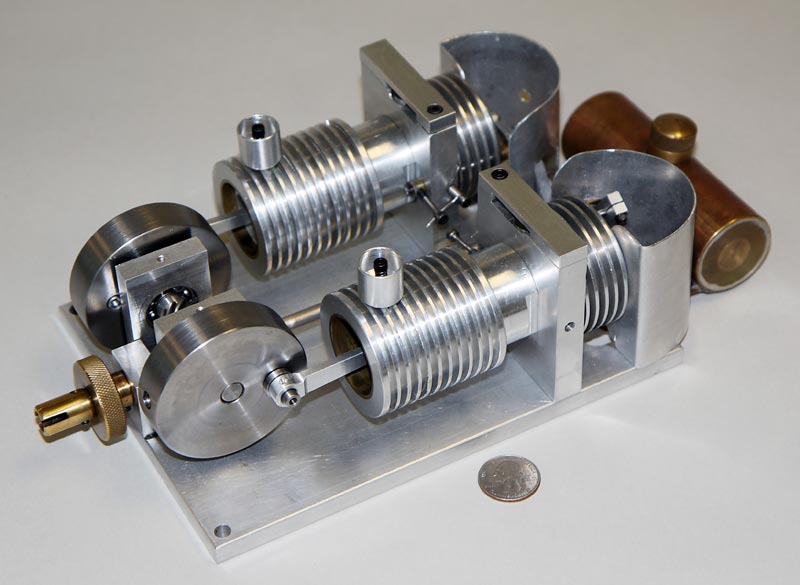This 2-cylinder flame licker engine was built by Alphonse C. Vasallo in 1968. (Courtesy of Cherise Vassallo, Ingrid Vassallo, Andre Vassallo). These engines are variously called vacuum, flame-licker or flame-gulper engines and work by drawing hot gasses or a flame into a cylinder to be cooled. Admission of the hot flame into the cylinder is controlled by a valve. There is a power stroke every revolution. On the downward stroke of the piston, the valve is open and flame is drawn into the cylinder. Just before the bottom of the stroke the valve is closed and the resulting drop in pressure draws back the piston for the power stroke.
One problem found when running these engines is the back-pressure at the end of the power stroke. it is important to construct the exhaust valve so that it can easily lift and release any back-pressure. The engine is 12″-long, 6.5″-wide, 3.5″-high, and weighs 7 lbs.

